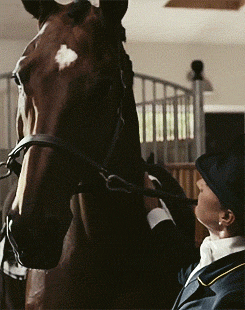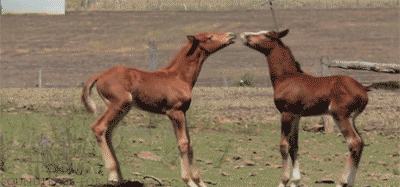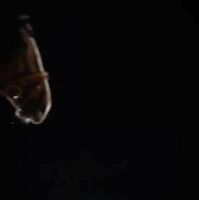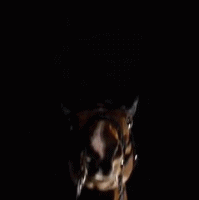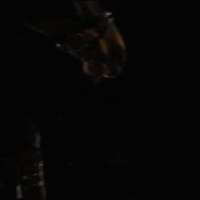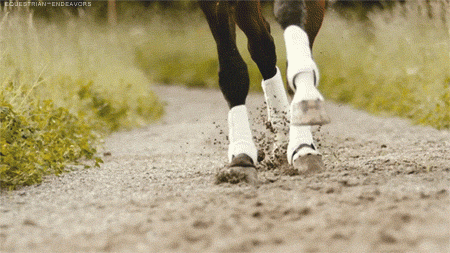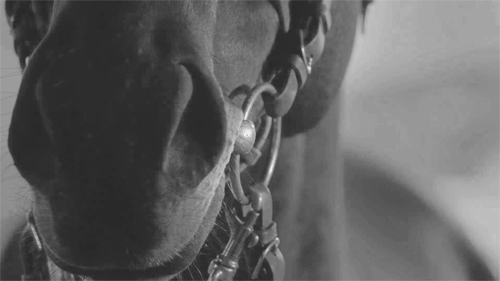AdoptionHorses can be acquired through a variety of different ways, including straightforward purchases, auctions, rescues, and prizes. In a purchase competition, forms are submitted to vie for the purchase of the horse, the price of which will be listed on the horse's information; however, these will not be first come, first serve. The forms required will typically include something involved with the purchase of the horse, such as the best name, a short story, the best personality etc. Occasionally the barn best equipped to care for the horse will be chosen; however, any pre-existing friendships and such will be fully ignored for the sake of horse adoptions. Auctions do not require that you submit a form, and the horse is simply given to the highest bidder by the end of the time allowed. Rescues are first come, first serve; however, in order to adopt a rescue, you must be able to pay the vet care that will be listed on the horse's page, and the stats of a rescue horse will not be revealed until after the horse has been purchased. Horses can also be adopted as prizes by submitting a form that includes some sort of creative aspect, such as a short story, a poem, a drawing, a funny gif, etc. The desired extra will be disclosed at the beginning of the competition. Customs may never be requested and can only be won as prizes from a Level X horse show.
Barn Types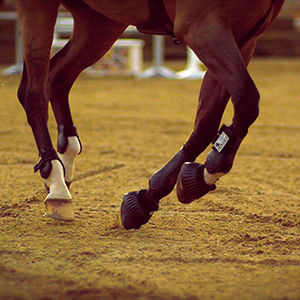
In order to adopt a horse, you must have a barn. You may have up to three barns; the first one is free, and each subsequent barn costs 25,000c. While there are no rules as to how many or which types of horses you may keep at a barn, there are several different types that you may choose to have your barn be:
Discipline-Specific: All horses trained in the same discipline will receive a bonus during shows, although they don't all have to be at the same level. Three-day eventing counts as a discipline, and although eventers may compete in jumping, dressage, and cross-country individually, all horses must compete in three-day eventing to be considered an eventer for the purposes of the barn. Horses in discipline-specific barns are rewarded with two extra showing points at top-level shows. Although there may be a few horses that are trained in another discipline, they should not outnumber the horses trained in the barn's specialty and will not receive a bonus.
English/Western-Specific: All horses trained in english, if it's an english barn, or western, if it's a western barn will receive a bonus during shows. They don't all have to be in the same discipline or the same breed, but they cannot compete in a discipline under a different style than what the barn is. Horses kept at english/western-specific barns will receive one extra point in low- and high-level shows. Although there may be a few horses that are trained in another discipline, they should not outnumber the horses trained in the barn's specialty and will not receive a bonus.
Breed-Specific: All horses within this barn that are the same breed will receive a bonus during shows and breeding, though they don't have to all compete in the same sport. Horses kept at breed-specific barns will receive a two-point bonus for breed-specific shows, which are hosted by breed associations, and a two-point bonus for foals during breedings.
Rescue: All horses within this barn must be rescues or the offspring of rescues. Although the user must pay a vet bill when adopting the horse, all horses in the barn will receive free vet and weekly care from that point forward.
Stud/Breeding: In order to be recognized as a stud/breeding barn, the majority of the horses must be available for breeding to the public, and all should be available for breeding after certain specifications are met. Mares will be able to breed twice a week (but must have a two-day cool down period in between breedings; weeks will officially start on Sundays for mares to make keeping up with this easier). Stallions will give a three-stat bonus to the foal that the owner may distribute at will and mares will offer one additional stat to the foal. While a stud/breeding barn can be simply that, there may not be a western-specific or english-specific breeding barn. There may be discipline-specific barns, however. While breeding barns may also be breed-specific, they cannot start out as both breed-specific and discipline-specific. Once it has been proven to me that the breeding barn is truly being used as such (and not just an excuse to breed your mare twice a week), I will allow that barn to be both breed-specific and discipline-specific if the user desires.
There may be discipline-specific, breed-specific, rescue barns if a user would like, but this would be relatively difficult to accomplish. Discipline-specific barns do not receive an extra point for being english/western-specific as well. To start off one's barn, it is recommended to focus on acquiring good horses and purchasing separate barns to sell horses to later. Additionally, in order to set up a barn, one must come up with not only a name but a barn owner. The only necessary information for the barn owner is the name, age, and gender, although a he or she may be expanded upon if you would like. The minimum age for a barn owner is 22. Although the barn owner is the only required character, other characters may be made as well. However, additional characters do not affect anything and are purely for entertainment. Please note: The character created for this sim will be used for events in the horse's life, especially training. If you would rather not have someone else writing for a particular character, please do not use that one and come up with a different character.
Horse StatisticsEach horse's page includes a variety of stats belonging to the horse. These are used to determine the winners of a competition and the stats of a horse's offspring. The first set of traits can go as high as possible; the second set is always out of ten, training excepted. The physical traits most desirable to a horse's specific discipline are discussed under Disciplines.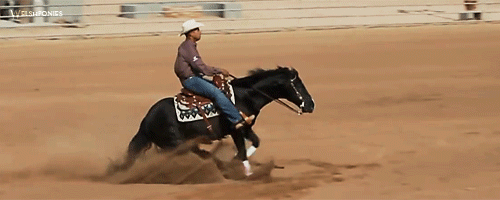
AccessoriesIn order to show, a horse must have the proper accessories, which are discussed under Disciplines below. These accessories cost money and must be purchased at a tack shop before they can be put on a horse. Some, such as bonnets and splint boots, may be any color, and the user is to let the artist know which color they would prefer them to be. Some disciplines, however, such as reining, require the accessories to be a certain color. I will let you know if this is the case for your horse's discipline. You may have an unlimited amount of accessories, but each one of a new color must be paid for once more.
Please note that a full mane/tail braid cannot be used for shows, but if a horse has a short or non-wavy mane, these braids may be used to allow the horse's hair to grow out and/or become curly. It takes one week for a short mane to become long and two weeks for a non-wavy mane to become wavy; if a horse's mane is not naturally curly, the wave will disappear after one month and the mane and tail will need to be braided again. Accessories and braids will appear under the horse's page, with the exception of full braids, which will appear on the horse's main page. Please also note that colors are only applicable for accessories; manes and tails will always be that horse's natural hair color, regardless of any bands or ties.
Additional Information- Horses age a year every two weeks.
- Purebred non-foundation horses get a three-stat bonus that can be added to any physical trait at the discretion of the owner.
- Horses bred from parents both owned by the same player will receive two additional stats that can be added to any physical trait at the discretion of the owner.
- Horses trained in the same discipline(s) as their parents will receive a one extra point at low- and high-level shows.
- Geldings receive two extra points at all shows.
BreedingsIn order to breed a horse, the recipient of the foal must post the form and fill in all information. If the recipient owns both horses, it is not necessary to post the stud or mare fee. If the recipient owns either the mare or the stallion, the owner of whichever horse the recipient does not have must quote the posted form and write that the breeding is approved or the owner must give permission somewhere on a post and the person requesting the breeding must link to it in the form. If the recipient does not own either horse, both owners must quote the post and write that it is approved before the breeding can be completed or give permission that can be linked to by the requester of the breeding. Pasting a quote from a PM or even from a post (and not linking to it) is not sufficient. Breedings are always open unless I say otherwise.
Please note that breeding two horses together does not mean that you will necessarily get a differently colored horse, nor does breeding a solid-colored horse to a pinto or appaloosa mean that the foal will have pinto or appaloosa markings. The use a horse coat generator determines the possibilities and then a random number generator to determine the likelihood of that coat out of one hundred and the coat is then selected randomly -- it's not as simple as mashing two horses together. Additionally, there is a 1% chance that there will be birthing complications -- the foal and/or mare have an incredibly low chance of dying, but vet bills may increase - this is entirely random.
Horses may be bred as many times as the owner would like until they are too old. Mares and stallions can begin breeding at three years of age, and mares may only have one baby per week unless owned by a breeding farm. Stallions can be bred as often as the owner would like to breed them. Once a mare reaches age 20, there is only a 50% chance of her actually being able to carry a foal, and a breeding may be attempted once every three days. After age 30, mares and stallions can no longer breed. BankEach user gets 20,000c to start with and will receive 500c each week (every Friday) in addition to any competition earnings. Care for a horse costs 200c/week total, although rescue barns don't have to pay for horse care. Occasionally an emergency vet bill will pop up; this is entirely random but must be paid or the horse may be seized due to neglect. Rescues don't need to pay for this, either. This information is kept up to date in the below post which you can find next to your name and information.
Barn AffiliationsBarns can create affiliations with other barns, which allows them to create local shows and an additional point is given in a competition to horses belonging to the barn hosting the competition. Local shows do not cost money to attend, but a user can only attend if his or her barn is a part of the affiliation. Additionally, the quality of the horses will determine the prize money paid to first, second, and third place. There may only be up to five original barns of an affiliation. Any additional barns must be first approved by me. When an affiliation hosts a show, I am to be notified in order to determine the prize money, and each barn can only host a show once a month. The cost to create a local show is 1,000c.
Breed & Color Associations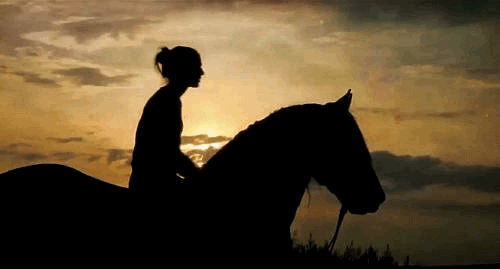
Breed associations can create shows specific to the breed they represent. Additionally, breed associations keep a ranking of the top stallions, mares, geldings, and overall horses within the association, making it easy to find the best ones to breed and/or buy. Each horse admitted into the breed association must pay a fee to register, which is decided upon by the president of the breed association. This is a source of money for the breed association, as well as competition fees, and breed associations start with 50,000c. Once this money runs out, it's up to the association's president to get more money. The cost to create a breed-specific show is 2,500c, and in breed-specific shows, the association's president's horses receive two additional points. The founder of a breed association must serve at least one month's term as president. After that time, another user may step up or the founder may choose to stay on as president. If more than one user would like to be president, a poll will be set up and the association members will vote. Breed associations may include types, such as gaited horses or sporthorses. If you would like to create a type registry/association, simply submit the breed association form.
Color associations may also be created, and though they cannot host shows, they can be an excellent resource in finding horses of a particular color to breed with. The top stallions, mares, and geldings must be organized as with the breed associations, and if the user chooses to charge an admittance fee, any money will go directly to the user rather than the association. For any color association, there must be a disclaimer that it is a color, not a breed.
If you are the one creating an association, you may choose the official name, such as "Palomino Horse Association," "Palomino Horse Breeders Association," "Palomino Horse Registry," "Palomino Breeders Association," etc. I simply included the number of terms that I did to give you a wide variety to choose from -- you don't have to use them all, or even any. Breed and color associations must first be approved by the all mighty RVEC Staff; barn affiliations may be created independently.
Selling & Leasing HorsesBuying, selling and leasing horses is a giant part of this sim. It allows you to earn money from horses you have brought and allows you to rid those pesky equines draining your bank account. Horses offered for free or forcibly taken due to neglect will count as rescues. If you decide to lease out your horse, you will find the appropriate form below, fill it out and post away. Leasing allows another player to train, breed, and receive money from a horse without actually owning it. The lessee must pay the horse's care in addition to any price the owner sets, but any earnings from competitions or breedings will belong to the lessee.
In addition to leasing out a horse for income, a user may choose to lease out a horse in order to ensure that it is trained every week while they are on a vacation or unable to access the computer for a certain length of time. If this is the case, the owner should specify that it is a free lease and may set limitations to training only in order to preserve the horse as it was before the owner's brief absence. The owner should also specify the reasoning behind this type of lease (not necessarily in detail -- just that you will be unable to get on) in order to receive a response as quickly as possible.
The owner may not request that a horse be returned before a lease ends unless the lessee is offered some sort of refund for either the week or from a portion of the total cost. The lessee may end the lease at any time but will not receive a refund unless the owner offers one.

